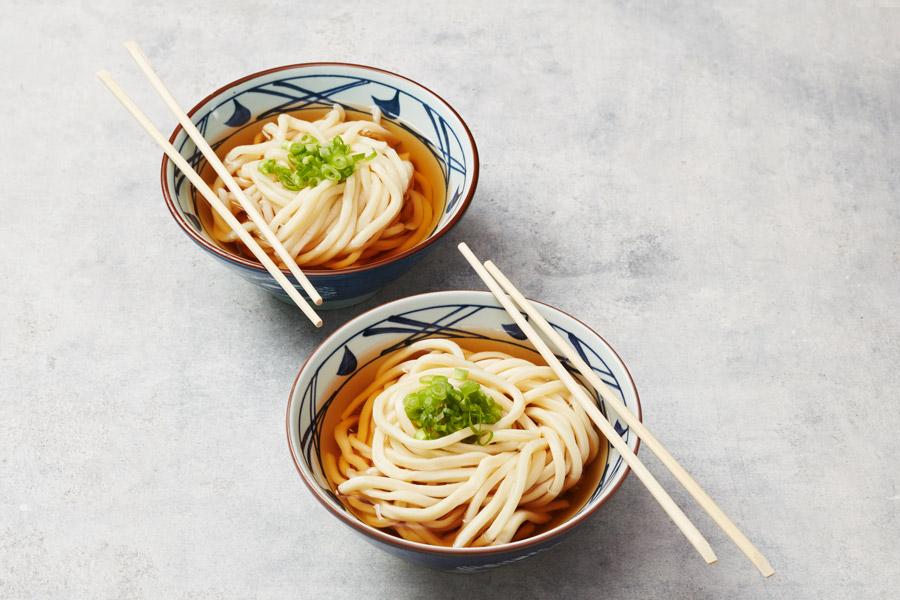Embarking on a culinary journey through Japan is like stepping into a world where each dish tells a story, and every flavour is a verse in the poetry of gastronomy. From the bustling streets of Tokyo to the serene countryside of Kyoto, Japanese food is a testament to the nation’s rich history and unwavering commitment to perfection.
Whether you’re craving the sizzling spectacle of street food in Osaka or the refined elegance of sushi in Tokyo, Japan offers an endless array of tastes to explore. Iconic dishes such as ramen, sushi, and tempura dot the country’s culinary landscape, each representing a harmonious blend of tradition and innovation.
As Anthony Bourdain aptly put it, the history of the world indeed unfolds on your plate when you delve into Japanese cuisine. It’s a cultural tapestry woven with flavours, where each meal celebrates the past and a toast to the future. So, as you prepare for your trip or reminisce about that unforgettable dish, remember that to know Japan is to taste it. Dive into the culinary heart of this island nation and let your palate guide you through a rich tapestry of tastes that make up the essence of Japan. Bon appétit, or as the Japanese say, itadakimasu!
Sushi

When you think about Japanese food, Sushi is probably the first thing that comes to mind. Back in the day, you could only find Sushi in fine dining Japanese restaurants. Today, sushi is not just a fine dining experience but a part of everyday food in Japan, available in various eateries and supermarkets. Understanding the array of sushi types enriches the culinary adventure, from traditional nigiri to modern rolls.
As a cornerstone of Japanese food culture, sushi represents Japan’s rich flavours and traditions. It invites both connoisseurs and novices to explore its diversity, embodying the essence of Japanese Food in every bite. This guide simplifies the sushi experience, ensuring you savour its heritage with every roll.
Sashimi

Sashimi, a quintessential part of Japanese cuisine, is the art of serving raw fish sliced with finesse and expertise. In Japan, chefs prioritize culinary precision and craft each cut of Sashimi with specialized knives, reflecting the country’s rich gastronomic heritage. The delicate texture of high-quality Sashimi, particularly Salmon or Tuna, is celebrated for its melt-in-the-mouth sensation.
Exclusive Japanese restaurants often offer a selection of fish parts, with the belly prized for its rich flavour and tenderness. For those eager to explore the depths of food in Japan, adventurous options like Octopus or the infamous Fugu fish—a delicacy that certified chefs must prepare due to its toxicity—await. This exploration of Japanese food not only tantalizes the taste buds but also offers a glimpse into Japan’s meticulous and revered food culture.
Nigiri
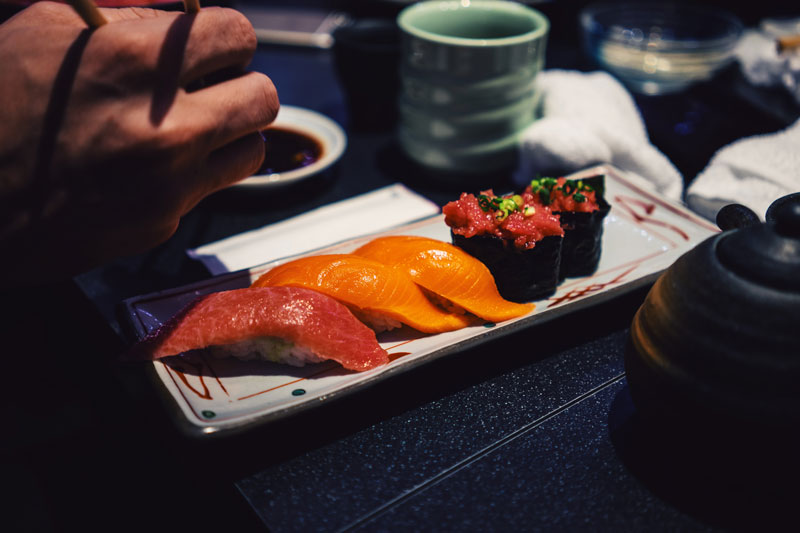
Nigiri is similar to Sashimi but with the added element of rice. The fish is actually cut differently and is usually half the amount of what you get with a cut piece of Sashimi. Nigiri is the most common Sushi available at supermarkets and casual restaurants. To truly enjoy Nigiri, the rice should be warm and the fish freshly cut, only add a small amount of Wasabi to the fish portion. When dipping in soy sauce, only dip it slightly on the fish side, do not dunk or drown the Sushi!
Temaki
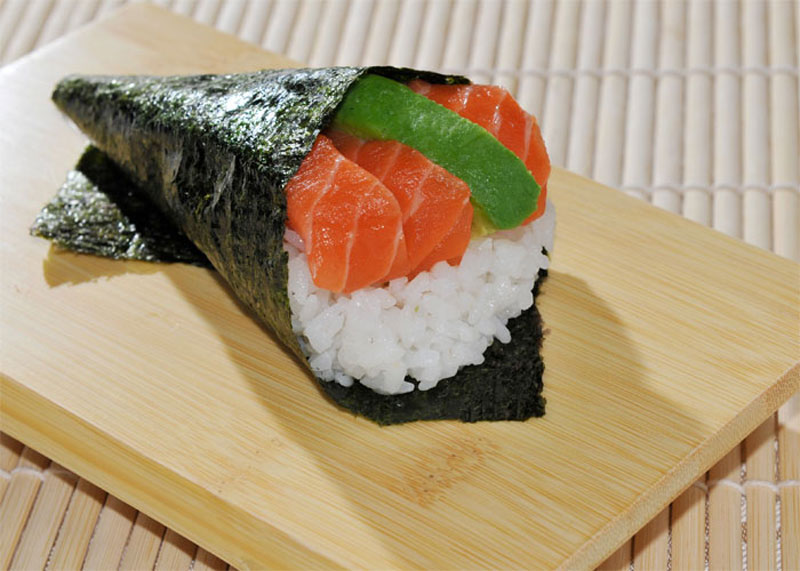
Temaki rolls, a beloved staple in the world of Japanese food, offer a delightful twist on traditional sushi. Wrapped in crisp Nori seaweed, these hand-rolled delights resemble an ice cream cone filled with succulent raw fish and fresh vegetables. Perfect for the bustling lifestyle, Temaki is the go-to choice for a quick yet authentic Japanese cuisine experience.
While convenient for those on the move, one should note the cultural etiquette in Japan—they generally discourage eating while commuting, especially on trains. This respect for public decorum is just another facet of the rich tapestry that makes food in Japan so unique and fascinating.
Chirashizushi
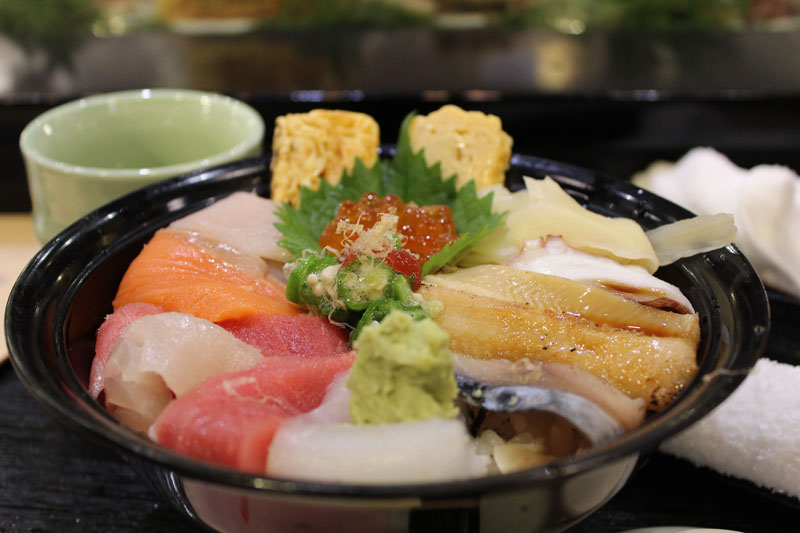
Also known as ‘scattered Sushi’, Chirashi Sushi is a bowl of rice with pieces of raw fish on top. The pieces used are the offcuts from the preparation of Nigiri or Sashimi and can vary in quality. However, it is much better value for money and can be quite filling.
People in Japan normally add Wasabi into the bowl with a bit of soy sauce and then stir it around for a more casual meal. There are also fine-dining versions where you are likely to get better quality fish and preparation overall.
Hosomaki

A supermarket regular, this type of Sushi is filled with one ingredient such as cucumber, avocado, or salmon. It is made by placing rice and an ingredient in the middle of dry seaweed (nori), then rolled up and cut into pieces. A great quick snack and starter before a meal. Another thrifty sushi meal and one of the most common types of Sushi made at home using the bamboo mat.
Futomaki

Futomaki is what you picture when Sushi is mentioned. The same as Hosomaki but much thicker as it contains more ingredients. This type of Sushi comes in special rolls like Dragon Rolls, which contain slices of fish or avocado placed on top or even substituted for the nori wrap. Futomaki can be made at home using the bamboo mat and is great to experiment with lots of different variations.
Uramaki
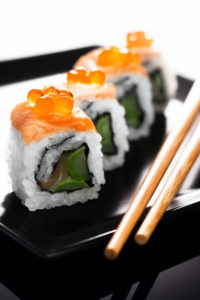
Also known as inside-out rolls because the rice is formed on the outside and the nori inside. Uramaki became famous outside of Japan because it was seen as more familiar to bite into rice than into seaweed. Generally filled with similar ingredients as Futomaki and Hosomaki but with the bonus of sesame seeds on the outside which adds depth to the taste. Size-wise, it’s not as big as a Futomaki and not as small as a Hosomaki – somewhere in the middle.
Onigiri

One of the best snacks that you can get in Japan, the Onigiri (おにぎり/rice ball). Found in all supermarkets across Japan. Made up of a ball of rice wrapped with dry seaweed (Nori) in a triangular shape. Within the rice ball, you will find not just raw fish but also cooked meat like chicken and pork. Commonly given to kids for school lunches in Japan and a great snack. You can easily make it at home, and since it doesn’t require raw fish or even a bamboo mat, you can prepare it with basic ingredients similar to an omelette.
Gunkanmaki
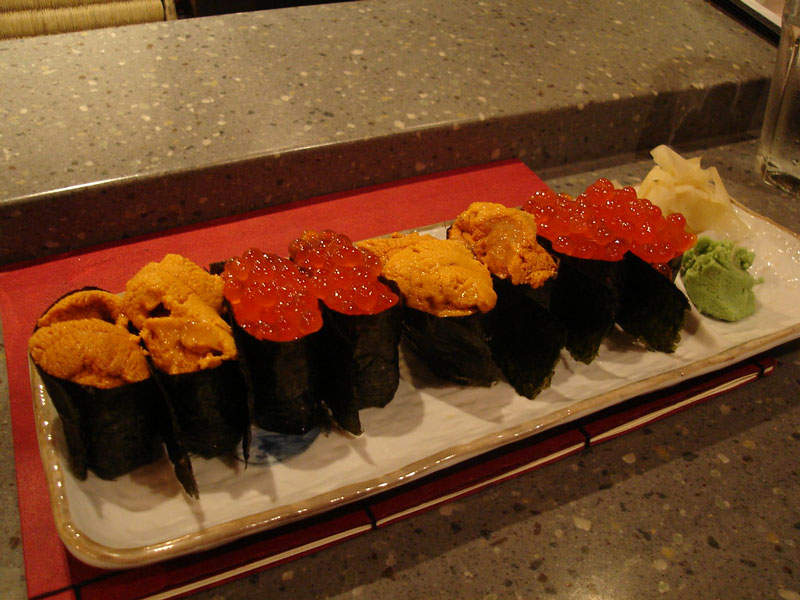
Also known as the ‘battleship’ roll. You won’t normally see this type of Sushi outside of Japan. Gunkanmaki is a type of Sushi that consists of rice with a strip of seaweed wrapped around but with extra nori to hold soft, loose, or finely chopped ingredients. Common ingredients are fish roe, nattō, or Uni, all of which you either love or hate.
Sasamaki
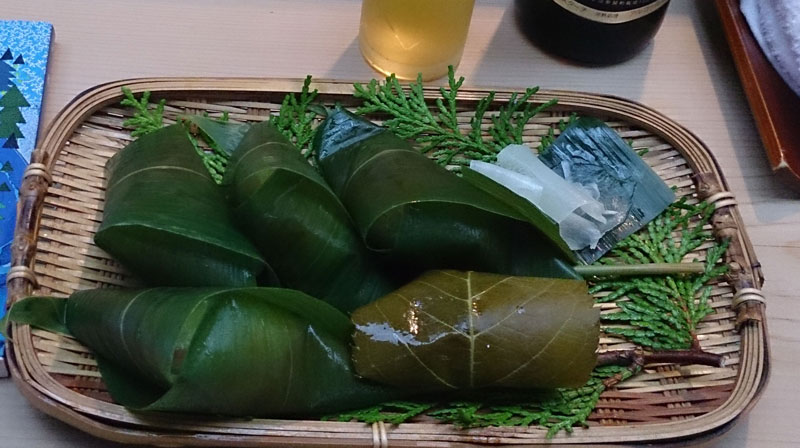
A rare type of Sushi, Sasamaki is Japanese rice wrapped in tied bamboo leaves using the same thread used in bamboo mats. Tie the leaves to preserve the Sasamaki during periods of high humidity, and season the rice with soy sauce or a simple ingredient to add taste. While available in supermarkets throughout Japan, it is best enjoyed in the countryside with locally sourced ingredients.
Oshizushi

A type of Sushi normally found in the Kansai region of Japan, around Osaka. Oshizushi contains cooked or cured fish and never raw fish. You press and form the fish and rice in a wooden block mould known as an Oshibako. Then, you remove the resulting mould and slice it into compact bite-size pieces. If you’re ever visiting Osaka, this is a must-try local delicacy.
Fugu
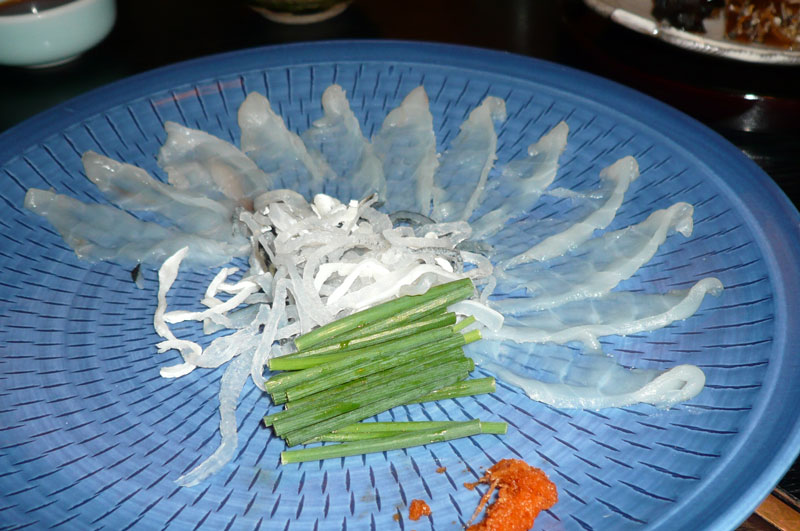
Fugu is the illustrious and daring poisonous bloated spikey fish served in Japan. You might recall The Simpsons episode where Homer eats Fugu for the first time and thinks he’s been poisoned. Fugu is prepared by skilled Sushi chefs who spend years training to be able to remove, delicately, the poisonous parts of the fish.
Fugu is one of the few dishes which the Emperor of Japan is prohibited from eating. When cut correctly, it offers an incredible taste and fine dining restaurants in Japan serve it. We do not recommend consuming it outside of Japan due to the rarity of finding the required level of skill for its preparation.
Rice Dishes

Japanese Curry
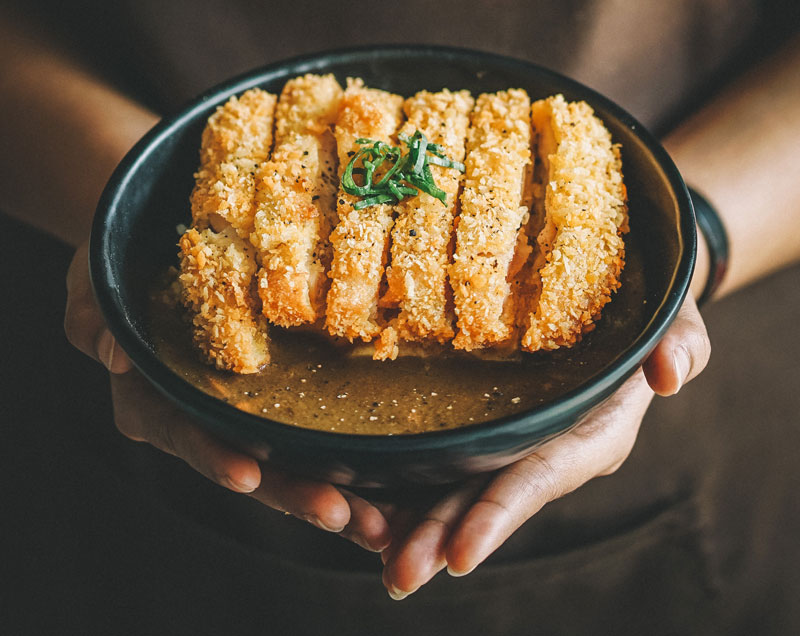
Anyone who’s tried Japanese food has tasted Japanese curry, a well-loved dish that resembles gravy poured over the rice. Japan introduced curry during the Meiji restoration through trade with Britain over goods from India. Curry became a nationwide meal only after the Japanese Navy & Army served it in the 20th Century, and it eventually made its way into every school cafeteria in the country.
Today curry is consumed in Japan more than Sushi. Curry stew made in Japan comes with all kinds of meat, but outside of Japan it’s most commonly paired with deep-fried breaded Chicken Katsu. Other variations in Japan feature thin slices of beef with potatoes and carrot with rice.
Donburi
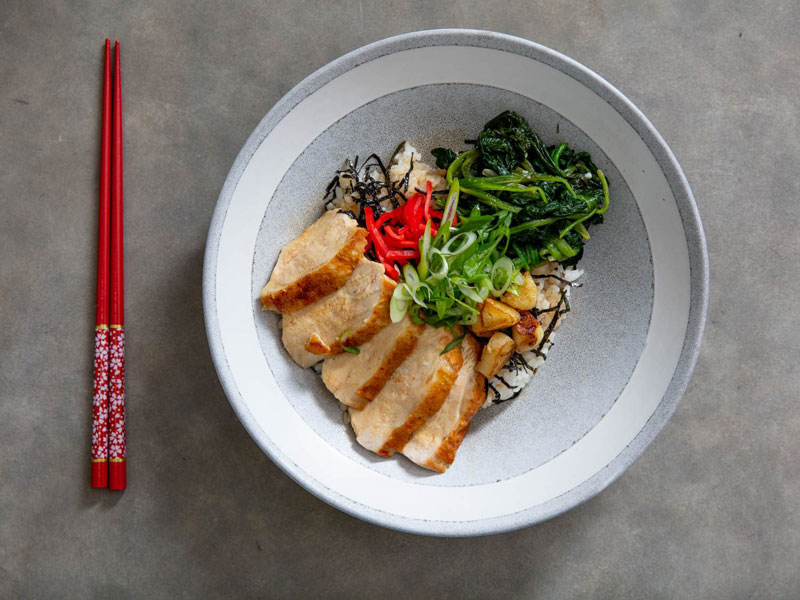
Another Japanese favourite enjoyed all over the world, Donburi is a rice bowl dish containing either fish, chicken, or beef along with vegetables, or if you’re feeling adventurous- Unagi (eel). Donburi sauces vary according to the season, ingredients, region, and taste. Most sauces consist of dashi flavoured with soy sauce and mirin. A popular variation of Donburi is Oyakodon which is chicken, egg, spring onions simmered together and served on the bowl of rice.
Hayashi Rice
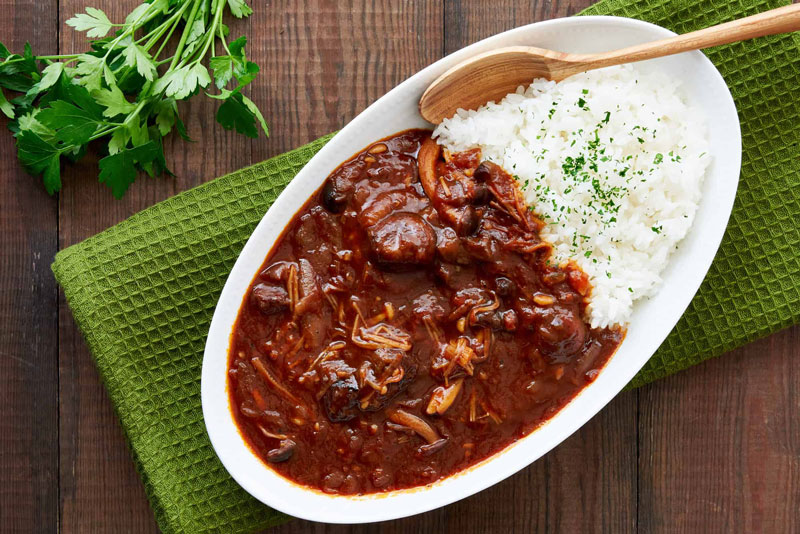
A western-inspired dish that was introduced to Japan by a French engineer who worked in the mines in 1868. He used ingredients such as red wine to create a thick demi-glace that mixed with tomato sauce. Contains beef, onions, and button mushrooms; typical of french stews. Hard to find but very popular in Japan so if you’d like to try more unusual western-inspired Japanese dishes, this is a must.
Omurice
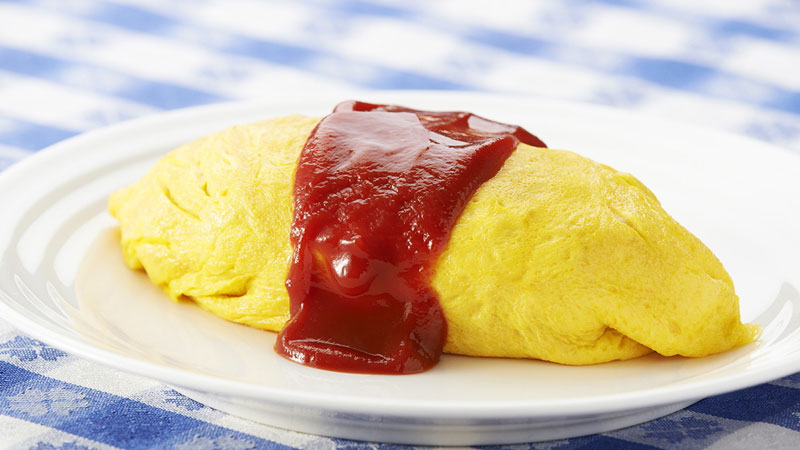
Another western-inspired Japanese rice dish that is basically an omelette filled with rice and a few other ingredients that are commonly found in the fridge. Served with tomato ketchup with salad on the side. Omurice is a favourite among children and is usually cooked at home. You will find it in a few casual restaurants in Japan but rare outside of Japan. Once you experience the ketchup on your Omurice, It’ll be difficult to imagine omelettes without it.
Tamago Kake Gohan
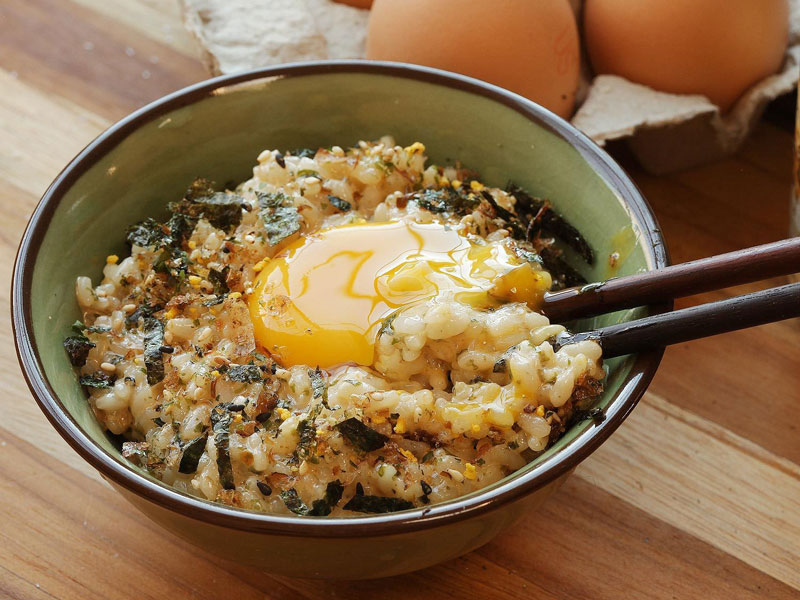
Tamago Kake Gohan consists of cooked rice and a raw egg that is placed over the top of the rice. People sometimes create a hole in the rice to pour the egg into. You’ll also find the egg mixture to include soy sauce. Tamago Kake Gohan is normally served as a breakfast meal and is the equivalent of ordering eggs on toast at a restaurant or cafe.
Ochazuke

A dish enjoyed in Japan for over 1000 years, Ochazuke became popular during the Heian period, where it was fashionable to pour tea + water over rice. Pour this liquid combination over rice and add toppings like dry seaweed, umeboshi plums, and salted salmon; also include marinated pollock roe.
Ochazuke continues to be a favourite in Japanese cuisine and is often an excellent way to eat leftover rice as a snack. In Japan, Ochazuke is enjoyed in the comfort of one’s home or upmarket restaurants. Since the 1950s, supermarkets have sold instant Ochazuke packets.
Kamameshi

Kamameshi, a traditional dish that epitomizes the essence of Japanese cuisine, is a symphony of flavours cooked in an iron pot, reminiscent of the Korean Bibimbap. The term ‘kamameshi’ translates to “kettle rice,” true to its name, it features a hearty blend of meat, seafood, and vegetables, all simmering together over a gentle flame. As the rice cooks, it acquires a distinctive char, infusing the dish with a smoky aroma and a satisfying crunch that’s highly sought after.
This culinary technique not only enhances the taste but also adds a unique texture that’s synonymous with food in Japan. Kamameshi isn’t just a meal; it’s a celebration of Japanese Food, offering a rustic yet refined experience that’s steeped in tradition and flavour.
Takikomi Gohan
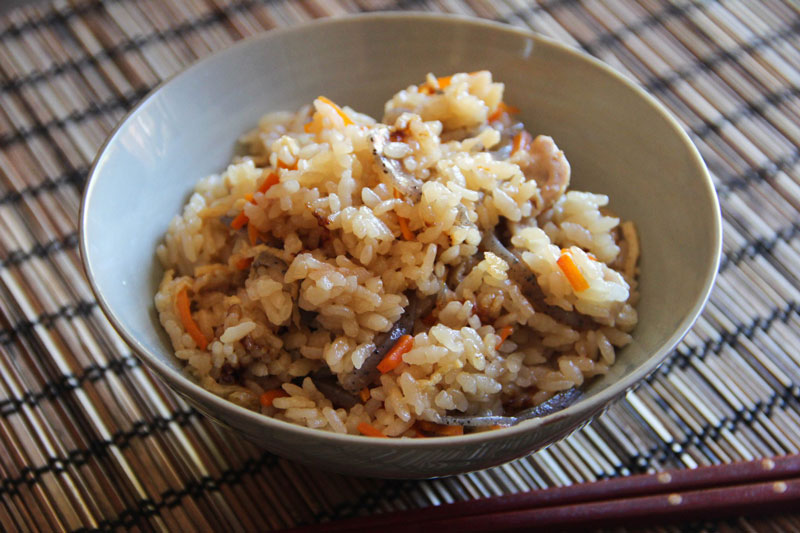
The Japanese equivalent of Chinese fried rice; whereby the ingredients such as dashi, soy sauce, meat, fish, and vegetables are all cooked together to make a tasty combo. A staple Japanese comfort food and an easy dish to prefer at home with similar methods to Chinese fried rice but with more Japanese-oriented dashi and ingredients.
Sekihan
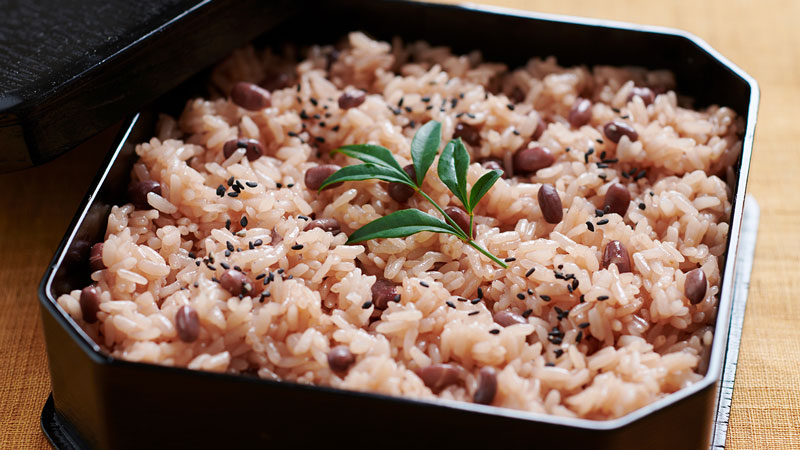
A Japanese dish made from glutinous rice and adzuki red beans. Sekihan is frequently eaten when celebrating a birthday, wedding, or public holiday. Sekihan, also known as ‘red rice’, is so universal in celebrations that people say, “let’s Sekihan” as an alternative to saying “let’s celebrate”. Often eaten with toasted sesame seeds. The reason for the rice being red in Sekihan is because back in ancient times cultivated rice was originally red.
Yaki
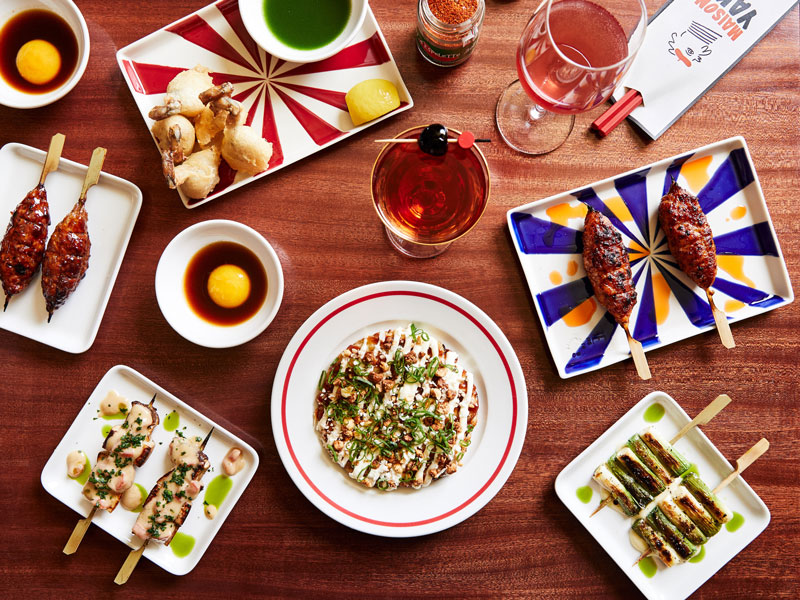
The word Yaki comes from yaku (焼く), which makes sense, as this translates – ‘to grill, broil, or pan-fry’. One of the most popular cooking methods in Japanese cuisine you’ll encounter all types of ‘yaki’ foods when visiting Japan. In fact, it’s nigh impossible to avoid them especially if you’re looking for delicious and comforting Japanese food. ‘Yaki’ style dishes are typically found as street food all across Japan.
Yakitori
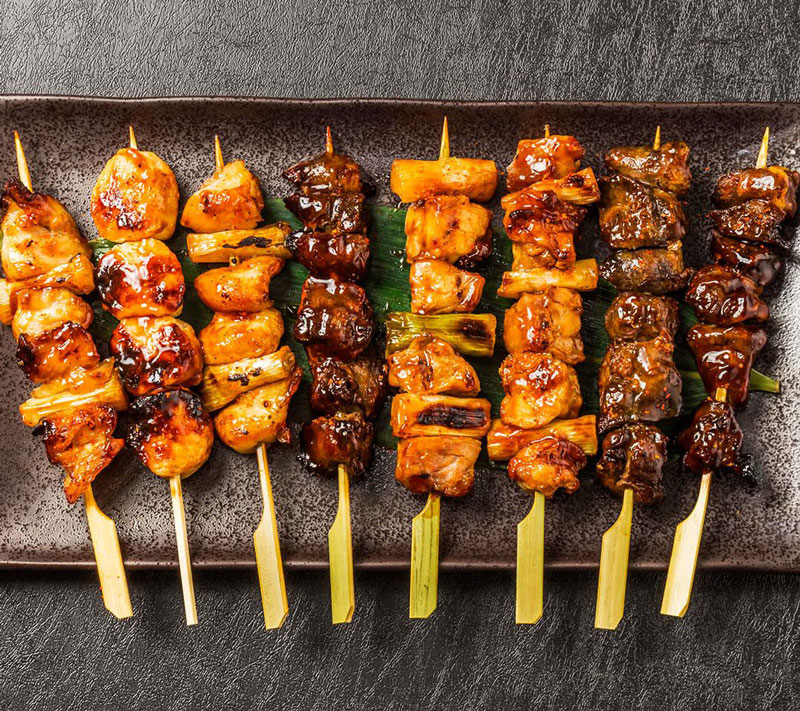
Yakitori is skewered, grilled chicken. Yaki means grilled and tori means chicken. The skewers are normally made from steel or bamboo and are the ultimate finger food. In casual Japanese eateries, you’ll find only one type of Yakitori, but if you visit an Izakaya, you’ll encounter Yakitori that uses more than the flesh of the chicken. It is often seasoned with a bit of salt and tare sauce and is perfect with a Beer.
Yakisoba
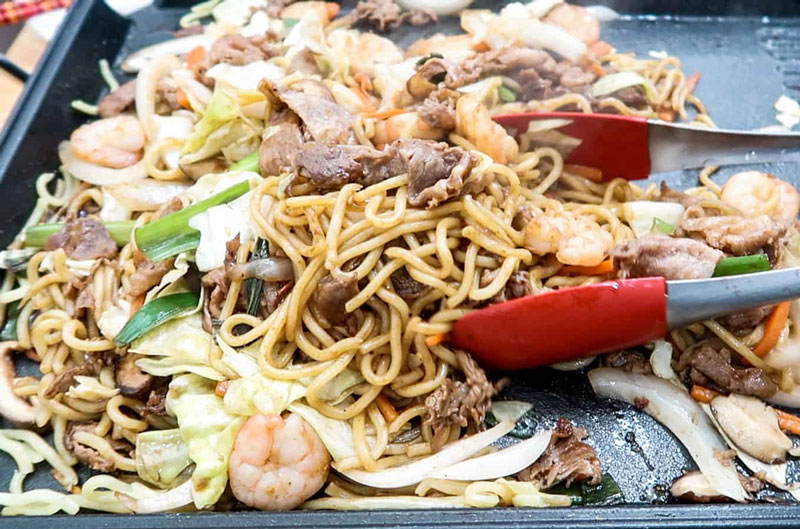
Yakisoba consists of pan-fried or grilled buckwheat noodles (soba) that are grilled with soy sauce and other ingredients. Yakisoba first appeared in market stalls in Japan in the early 20th century. It originated from China and has since become a favourite for anyone that loves Japanese food. Normally served as a side dish or starter with meat, seafood, vegetables and can be eaten both hot or cold depending on the weather.
Yakisoba Pan
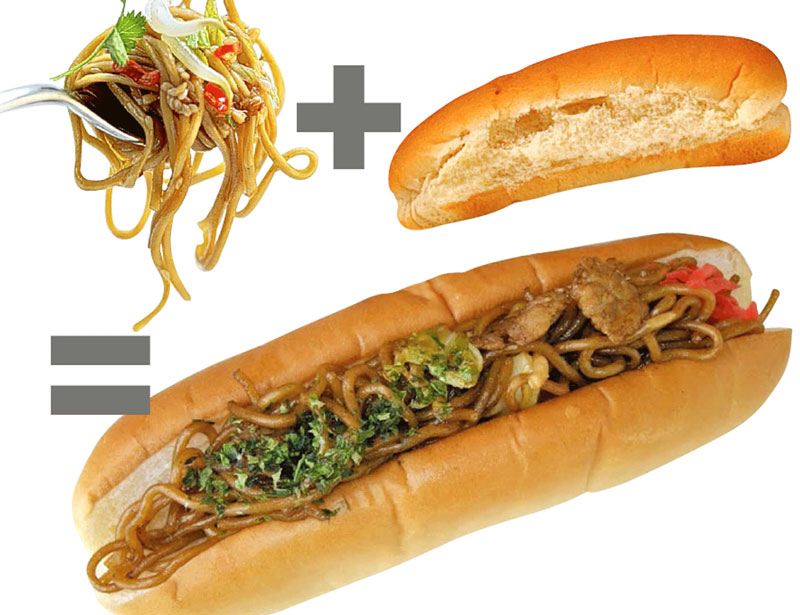
The Yakisoba Pan is a creative fusion that marries the classic Japanese food staple, Yakisoba, with the Western-style hot dog bun. This innovative dish features stir-fried noodles seasoned with a savoury sauce, neatly tucked into a soft bun and garnished with seaweed (nori), pickled ginger, and a drizzle of creamy Japanese mayonnaise.
Eschewing the traditional meat filling of a hotdog offers a unique twist on food in Japan. The Yakisoba Pan is a testament to the versatility and global appeal of Japanese cuisine, providing a delightful, meat-free alternative that’s both satisfying and flavorful.
Yakiniku
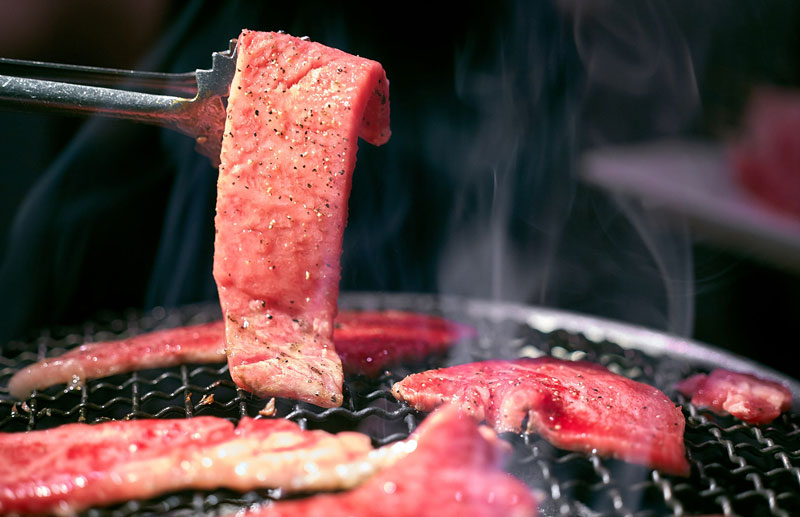
For meat-eaters; Yakiniku is one of the greatest gifts of a foodie’s life..except it’s kind of Korean, but don’t tell Japanese people that. Translating to “grilled meat”, this popular dish draws heavily from Korean dishes such as Bulgogi. You cook meat on the built-in grill within a table and dip it in sauces known as tare. Generally, the Japanese did not consume beef until the Meiji Restoration, when the Emperor began eating beef around the 1870s.
Taiyaki
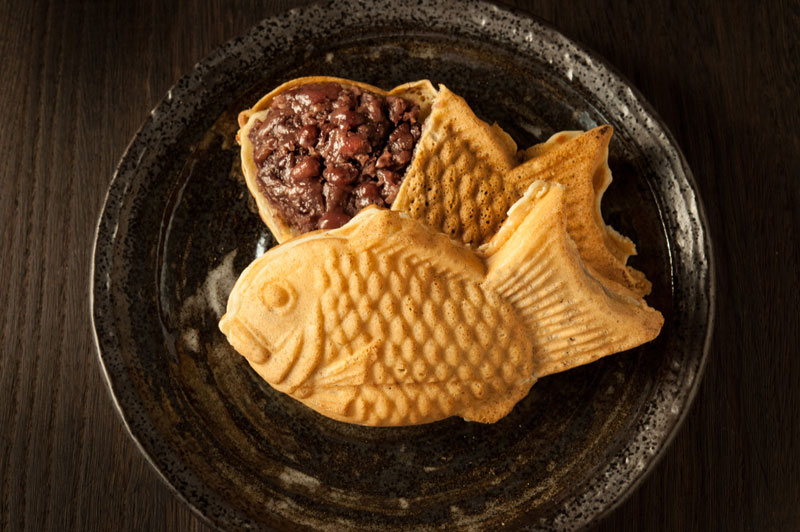
A traditional Japanese snack. Taiyaki is a fish-shaped waffle treat. They commonly fill Taiyaki with a sweetened paste of adzuki red beans, but they can also fill it with chocolate or custard. The batter for Taiyaki, similar to pancake batter, is poured into hot fish-shaped moulds. They add the filling and then fuse it together. Taiyaki should be on your must-try Japanese foods on your next trip.
Okonomiyaki
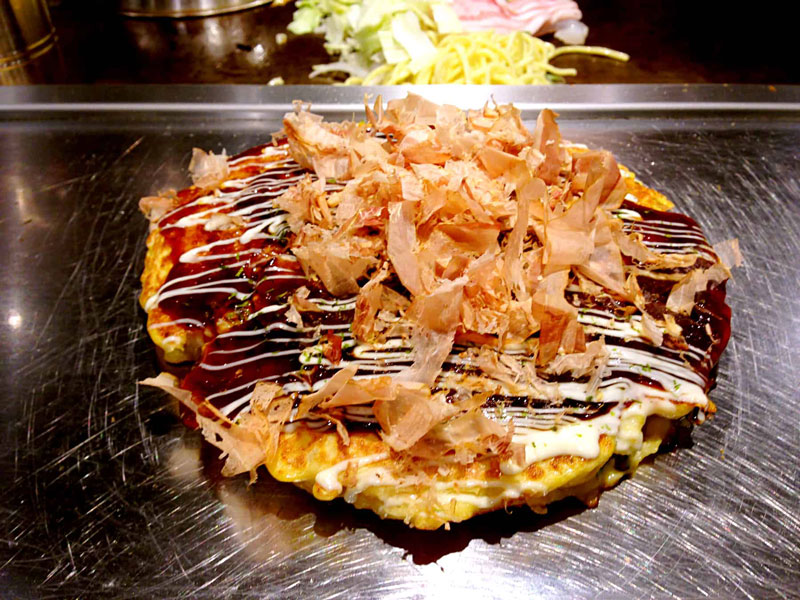
Okonomiyaki is a Japanese savoury pancake made of flour batter, grated yams, dashi, eggs, and shredded cabbage and topped with mayonnaise, special sauce, and bonito flakes. The most common version of Okonomiyaki is the Kansai version popular in Osaka. Other versions include additional fillings such as Yakisoba or layered cabbage, pork, and cheese that are part of the Hiroshima version.
Takoyaki
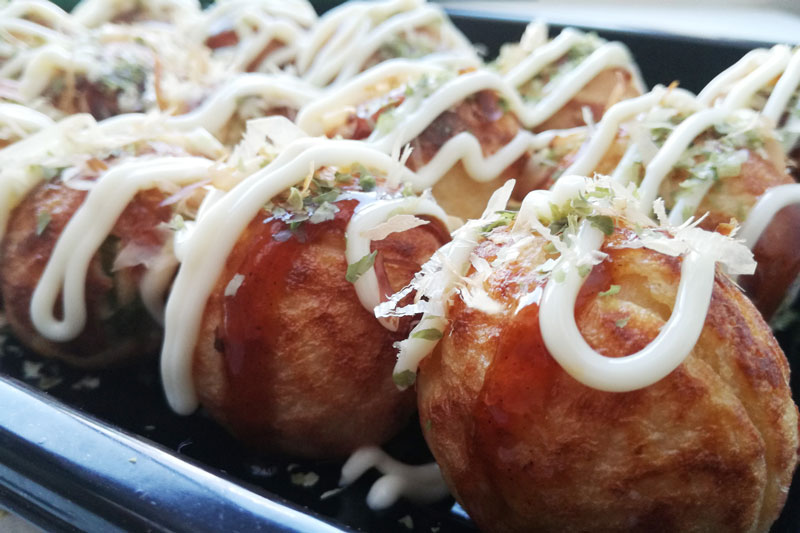
One of Japan’s most famous and appetising street food snacks, Takoyaki translates to octopus roast. You cook Takoyaki as battered balls in a special moulded pan, filling them with diced cooked octopus, spring onion, pickled ginger, and tempura scraps, and brush them with the special tangy Takoyaki sauce.
Mayonnaise is topped on the finished octopus balls along with delicious sprinkles of bonito flakes, which seem to sway from the heat. You can buy Takoyaki ready-made but they are best enjoyed by market stalls.
Teppanyaki
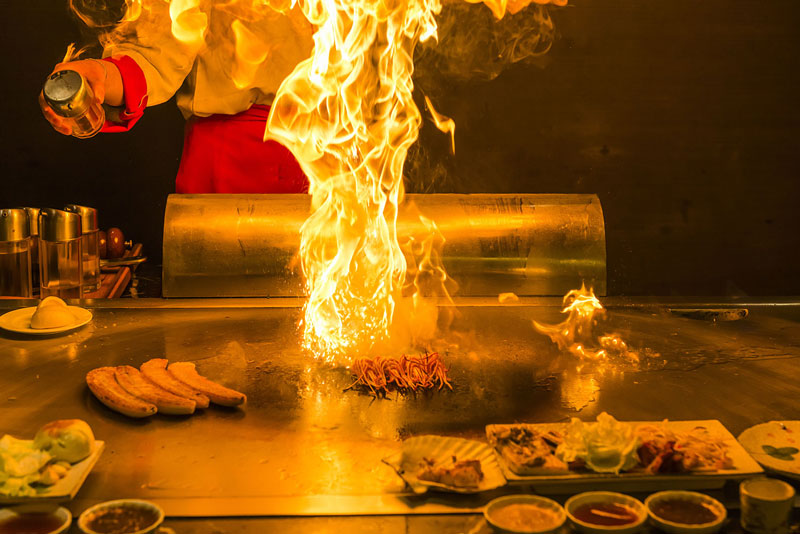
More a style of cooking rather than a type of dish. Teppanyaki translates in English to ‘metal plate for grilling’, with teppan meaning iron plate and yaki to grill, fry, or broil. Teppanyaki is a historically new form of Japanese cooking by Japan’s standards and it originated in 1945.
Not surprisingly this more unconventional Japanese cuisine was very popular among foreigners, made famous by Benihana in 1964, in NYC. Beef, seafood, chicken, and assorted vegetables are all fried on the teppan with teppanyaki sauce consisting of soy sauce, mirin, ponzu, and vinegar.
Yaki Onigiri
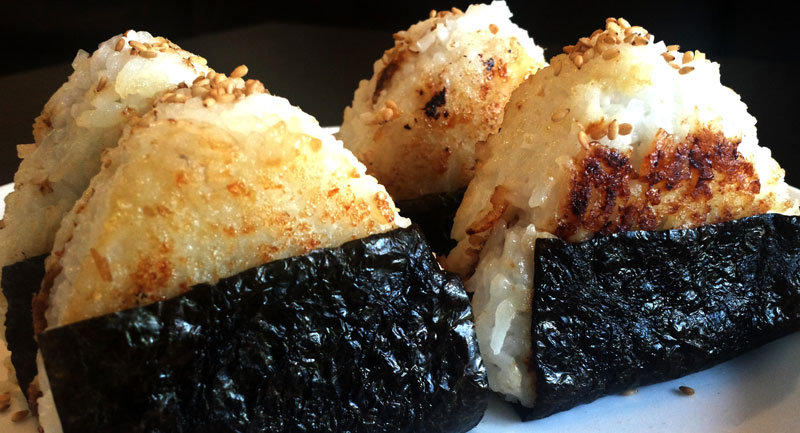
Yaki Onigiri, or grilled rice balls, is a delightful variation of the classic Onigiri, adding a crunchy exterior to the soft rice. This grilling process changes the texture and enhances the flavour, setting it apart from the usual Japanese food offerings. As a healthier option compared to other fried treats, Yaki Onigiri retains the essence of food in Japan without compromising on taste.
Simple to prepare in your kitchen, this dish is a must-try for anyone looking to delve into the world of Japanese cuisine—a crispy, delicious experience that’s both traditional and innovative.
Himono
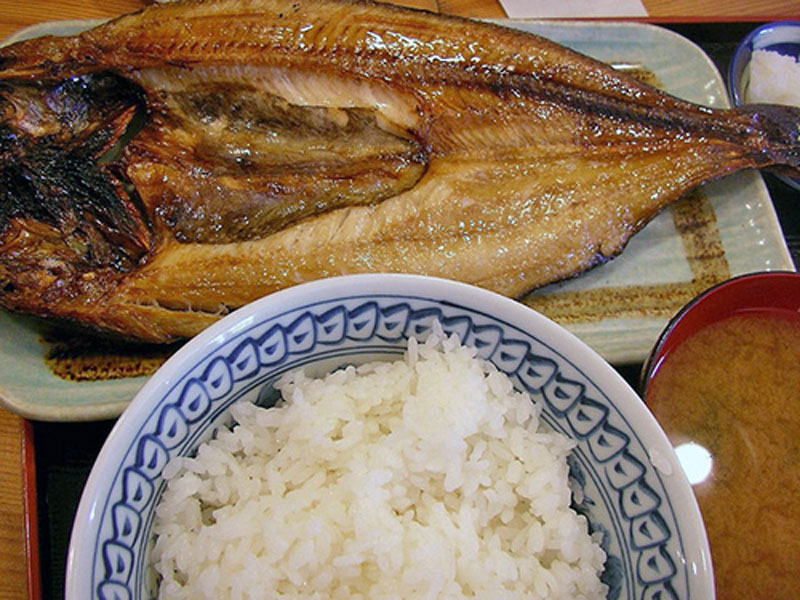
You may be familiar with the Japanese using seaweed (nori) and ginger to preserve fish but they also used techniques that are more common in South-East Asia – which was the preservation of fish using salt and drying naturally in the sun. You can eat Himono as a snack without any preparation. You can also grill or fry it and coat it with soy sauce to make it the main dish, which is often eaten with rice.
Soul Food
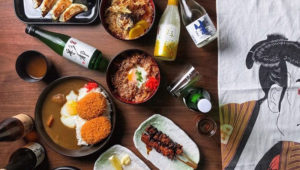
Now we’re entering into the realm of Japanese Soul Food. Recognize that the Japanese excel at taking recipes that aren’t originally theirs and reconstructing them in a uniquely Japanese manner, often enhancing the flavors! Skeptical? Try the Japanese fried chicken for proof. We celebrate Japan for its fresh fish and delicate rice dishes, but we must also acknowledge the delectable allure of its Izakaya specials. Whether at Izakayas, festivals, or local markets and konbinis, you’ll find many places selling Japanese soul food. Fried food to the Japanese is like hamburgers to Americans. In Japan, if you can eat it, you can fry it; for lunch, dinner and snacks.
Gyoza
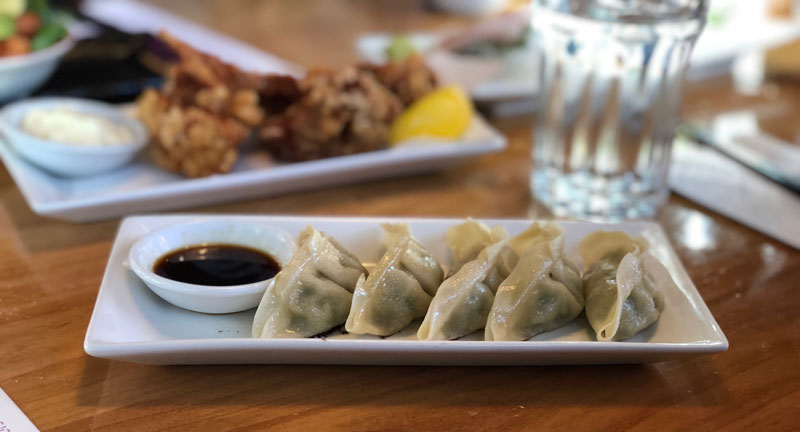
Gyoza is the equivalent of dumplings in Japan. The only difference is that you steam and pan-fry them, creating a soft juicy center covered with a slightly crispy outer skin. It can contain a range of different ingredients, including pork, chicken, prawns, and vegetables. Either cooked at home or eaten at restaurants. Best enjoyed with a cold beer or as a side order to your main dish. Any Japanese food fan can easily polish off 10 of these babies.
Tonkatsu
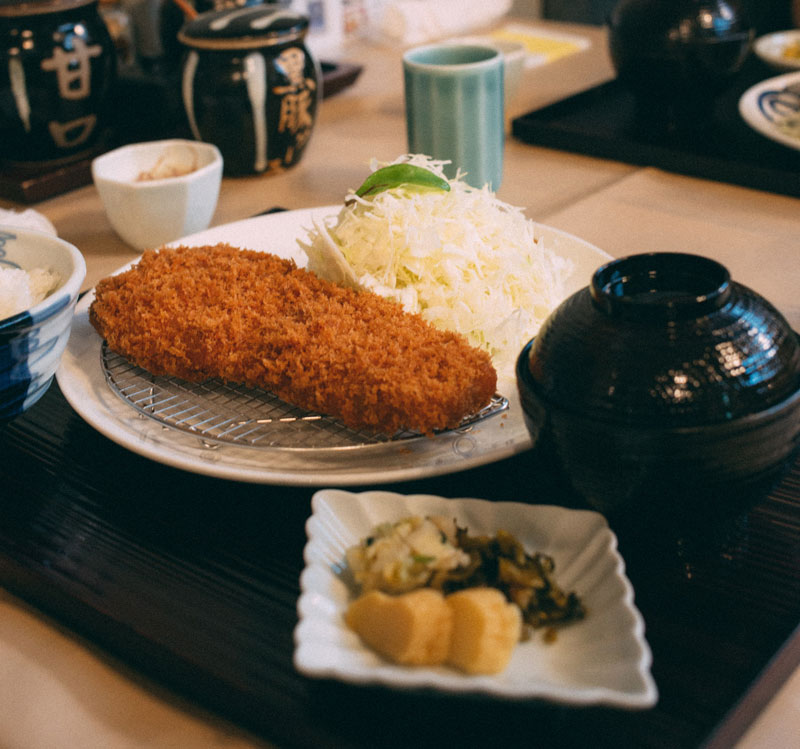
One of Japan’s favourite Western-style foods. Coat slices of pork cutlets with panko breadcrumbs and deep-fry them in oil to make tonkatsu. A local Tokyo restaurant called Rengatei first concocted Pork Katsu in Japan in 1899. Initially considered a type of yōshoku, chefs adopted the term ‘tonkatsu’ (pork katsu) in the 1930s.
Before Tonkatsu, Katsu was traditionally made from beef. During the Meiji era, Emperor Meiji encouraged Western eating habits and influenced his people to adopt this new eating habit in accordance with their bid for Japan to become a more modern country. Tonkatsu are served with a special Japanese sauce and lots of cabbage and rice. A great option as a starter dish and is part of the Katsudon dish. It is relatively cheap and is very popular in Japan.
Karaage
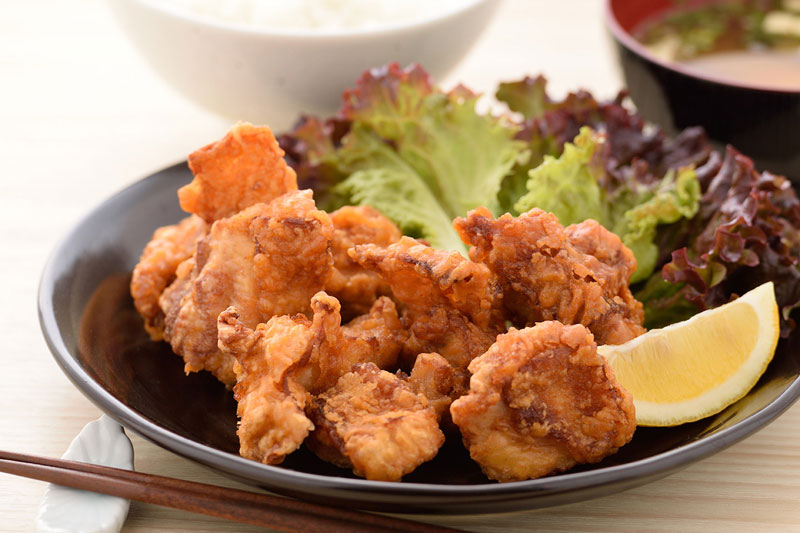
Let’s put it out there; Japan makes the best-fried chicken in the world. Karaage meat is very juicy and has a strong umami taste. The chicken meat is marinated with ginger, garlic, soy sauce, and cooking sake prior to deep frying. Often found at convenience stores and even frozen but it’s always better to enjoy fresh Karaage at Izakayas or casual restaurants.
Tempura

One of the earliest Japanese dishes that developed as a result of European influences. The tempura was introduced by the Portuguese to Nagasaki in the 16th century. Tempura is usually seafood or vegetables lightly battered and deep-fried into irresistibly crunchy and light flavour bombs. Serve the cooked Tempura with tentsuyu dipping sauce, which you make from dashi soup, mirin, and soy sauce.
Ebi Furai
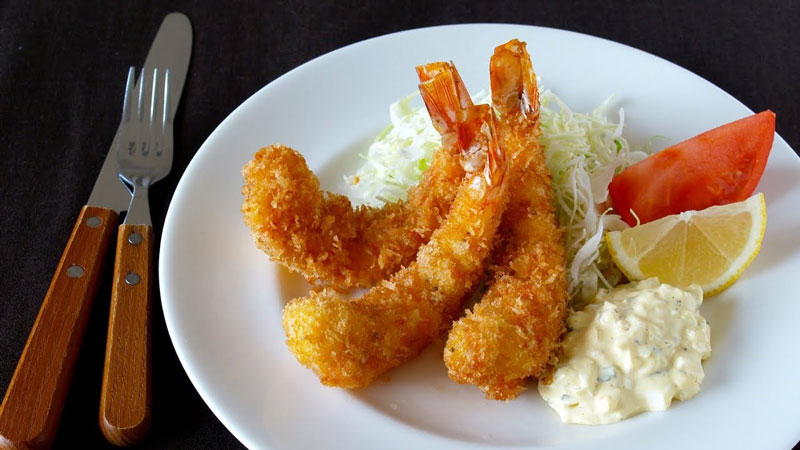
Ebi Furai, translating to “fried shrimp,” is a beloved Yoshoku dish that arrived in Japan during the Meiji era between 1868 and early 1900. This culinary delight stands distinct from Tempura, boasting a unique texture and batter. Ebi Furai’s hallmark is its coating of crispy panko breadcrumbs, enveloping the tender, juicy shrimp within.
Often served as a delicious starter or a vital component of a Donburi bowl, it’s a testament to the fusion of Western techniques with traditional Japanese cuisine. Ebi Furai captures the essence of food in Japan, offering a crunchy, flavorful experience that’s deeply rooted in the country’s diverse Japanese Food culture.
Korokke
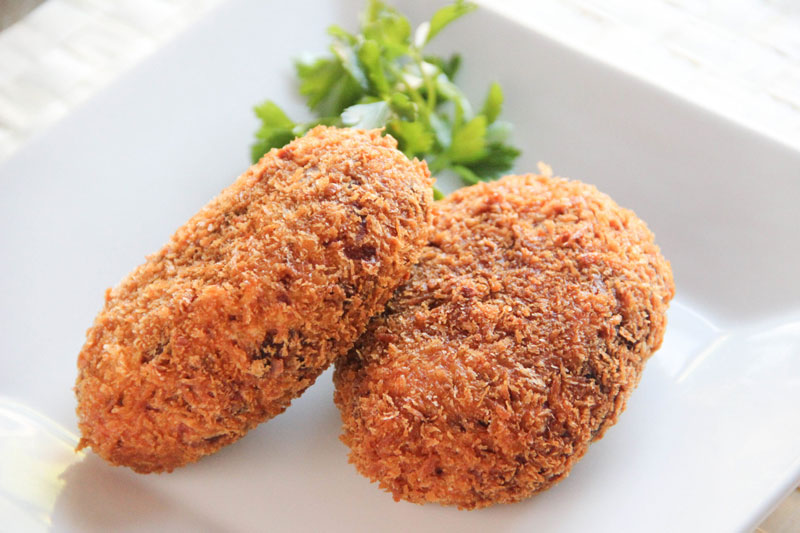
Another example of Yoshuku, Korokke is the Japanese version of French croquettes which was introduced in 1887. Although Korokke varies from the original croquette recipe, in its filling, which contains potatoes. Dairy processing technology had not been widely perfected at the time, which was the reason for this. One forms the mashed potato filling into a patty, covers it with panko breadcrumbs, and then fries it until it is crispy on the outside but still soft inside.
Kushiage
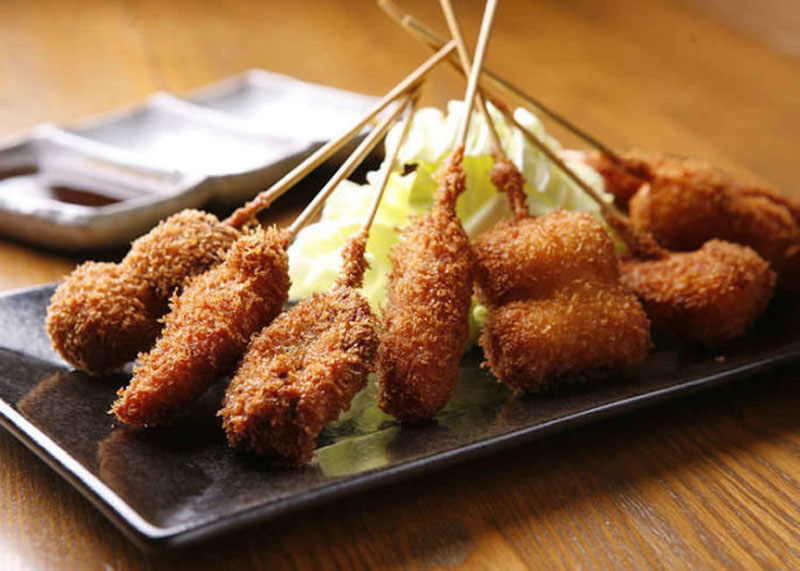
Kushiage, or Kushikatsu, is a delightful Japanese food with deep-fried skewered meat and vegetables. This dish offers a variety of meats and fish, catering to a range of palates. Originating in the vibrant neighbourhood of Shinsekai in Osaka, Kushiage has a rich history of being a staple for blue-collar workers since 1929. Renowned for its affordability and satisfying nature, it’s a culinary icon that embodies the spirit of food in Japan. As a filling and economical choice, Kushiage has cemented its place in the heart of Japanese cuisine, representing the fusion of taste and tradition cherished nationwide.
Specials

Sometimes you’ll come across Japanese food that just doesn’t fit into a specific category. For those dishes that are still worth a special mention, read on.
Kaiseki
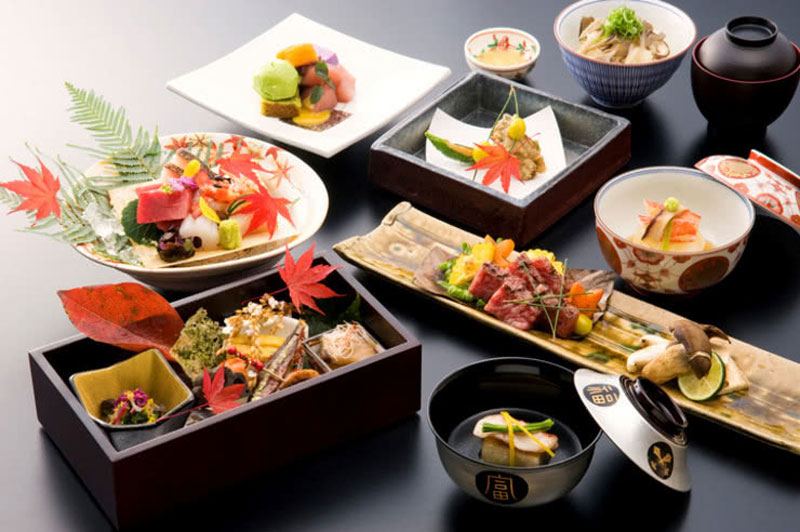
The Japanese version of “haute cuisine” where a chef prepares multiple courses of Edo-period meals. The preparation of an outstanding kaiseki-ryōri is considered an art form. Kaiseki is an amalgamation of traditional Edo-period imperial court cuisine (yusoku ryori), Buddhist monastery cooking (shoujin ryori), samurai household cooking (honjin ryori) and tea ceremony cuisine (cha kaiseki). Often served in ryokans all over Japan or small high-end restaurants.
Nasu Dengaku
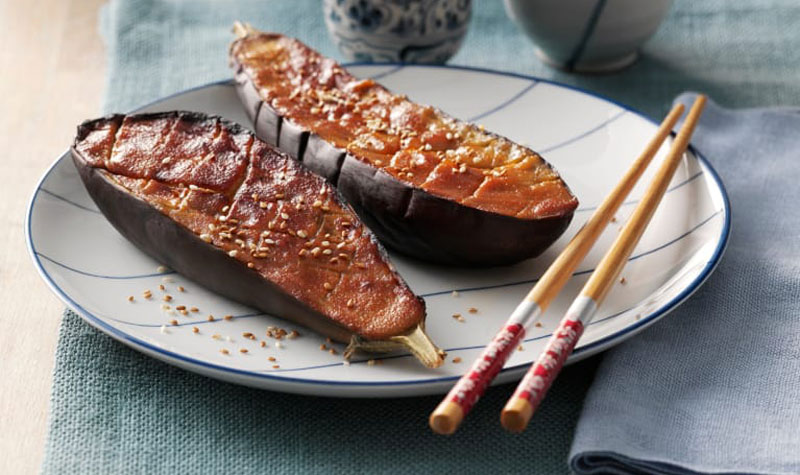
Nasu Dengaku, a vegan delight in Japanese cuisine, epitomises simplicity and flavour. This dish features halved eggplants, delicately scored and lovingly coated with a miso glaze that strikes the perfect balance between sweet and savoury. Oven-grilling caramelises the glaze, creating a delectable contrast with the soft, creamy flesh of the eggplant.
Historically, cooks prepared this dish over an open flame, adding a subtle smokiness cherished in Japanese cuisine. Nasu Dengaku is more than just a meal; it’s a culinary ritual that celebrates the natural goodness of Japanese Food, making it a favourite among vegans and food enthusiasts alike.
Agedashi Tofu
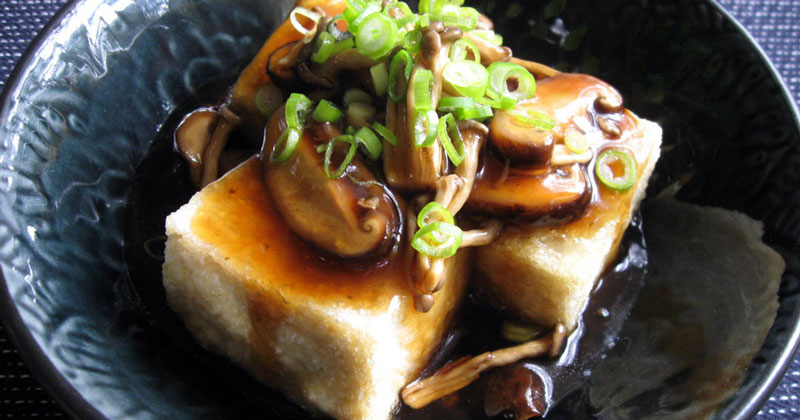
If you’re fond of tofu but long for a bit more taste, then you must try Agedashi Dofu. The dish features deep-fried tofu that one serves in a hot broth made with Japanese stock, wine, and soy sauce, garnished with Japanese spring onion (negi) and bonito flakes.
The stock is absorbed by the tofu without softening the crispy outer edge. Often eaten as a starter before your main meal arrives and it is one of the most popular dishes amongst foreigners and Japanese alike.
Senbei
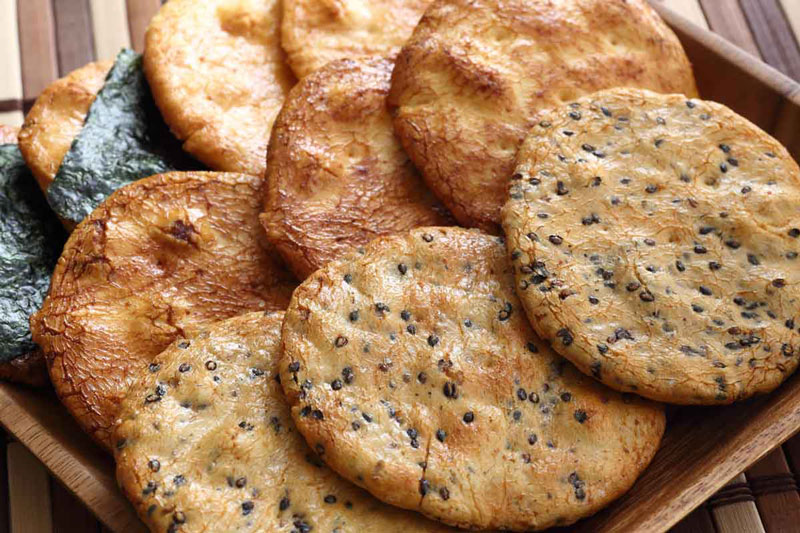
Senbei is basically Japanese rice crackers, both savoury and sweet. Serve them often with Japanese green tea and offer to guests. Normally, bake or grill senbei, but traditionally, cook them with charcoal. Brush the rice crackers with different sauces to add flavour. You can also find them wrapped with Japanese seaweed (nori), or serve them with salt or green garnishes.
Nattō
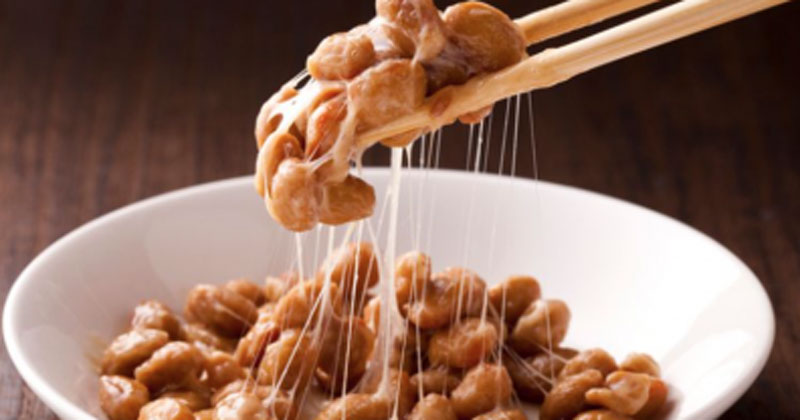
Nattō, often regarded as the Marmite of Japanese cuisine, polarizes with its distinctive sticky texture and potent aroma. While an acquired taste, this fermented soybean dish is a powerhouse of nutrition, revered for its probiotic properties that support a balanced gut microbiome. Typically enjoyed at breakfast, Nattō serves with a piquant karashi mustard and a splash of soy sauce, adding depth to its flavour profile. As a staple in food in Japan, it exemplifies the traditional dietary wisdom that has been passed down through generations, making it a vital component of Japanese Food culture.
Noodles

Another staple of Japanese food is the main substitute for any Japanese rice-based dish. Noodles were first documented to exist in Japan during the Nara period. Japan received its noodles from China, which were originally based on rice flour. Over time, Japan developed wheat-based noodles by the Kamakura period. Now, Japan boasts at least 8 types of noodles, with countless preparation methods. If you haven’t tried them all, start slurping!
Ramen

Japan’s most famous noodle soup. Consisting of a bowl of sliced meat, delicious pork/miso/soy broth, vegetables, and wheat noodles, made from flour, salt, and water. Contrary to popular belief, Ramen is actually from China and arrived in Japan in the nineteenth century. Today, you can find a Ramen joint in every major city around the world. Best enjoyed hot and meant to be devoured, this is arguably Japan’s most popular dish.
Udon
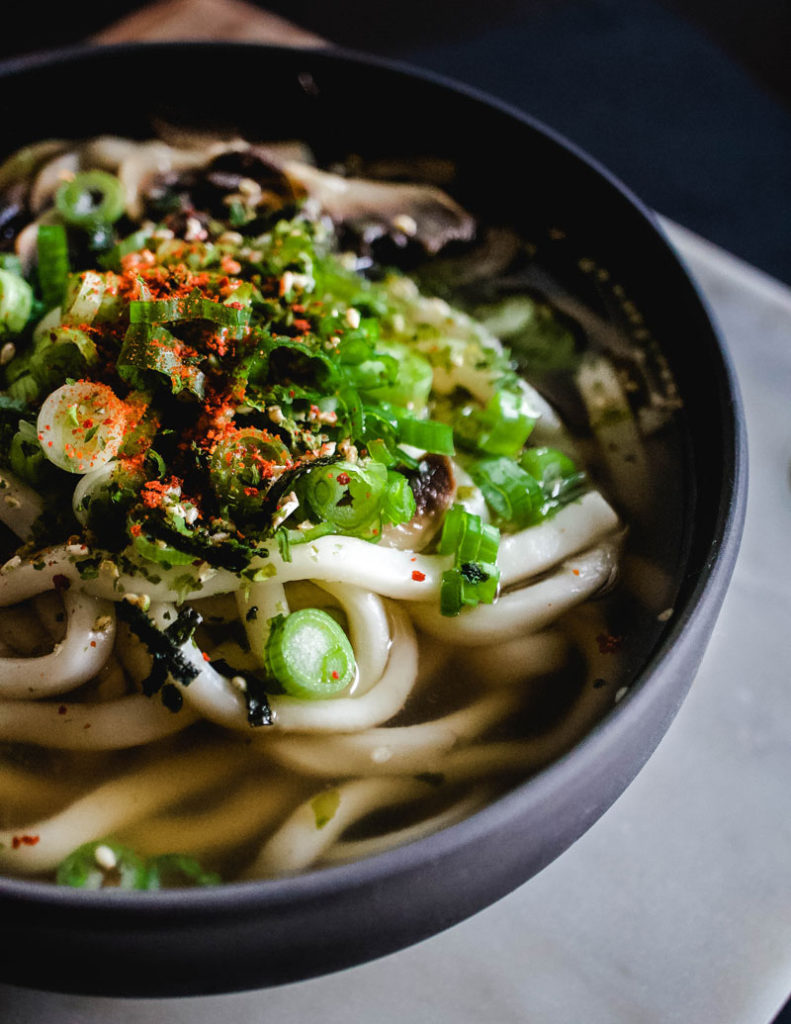
Udon noodles are wheat-flour noodle that is thicker and chewier than the more common ramen noodle. In their simplest form, eat Udon noodles in a light broth called kakejiru, made of dashi, soy sauce, mirin, and topped with Japanese green onions. Eaten hot or cold and with the broth varying in-depth, flavour and colour depending on what part of Japan you are in. Other notable ingredients added to an Udon Noodle soup include Prawn Tempura, Kakiage, deep-fried tofu pockets, and fish cakes.
Okinawa Soba
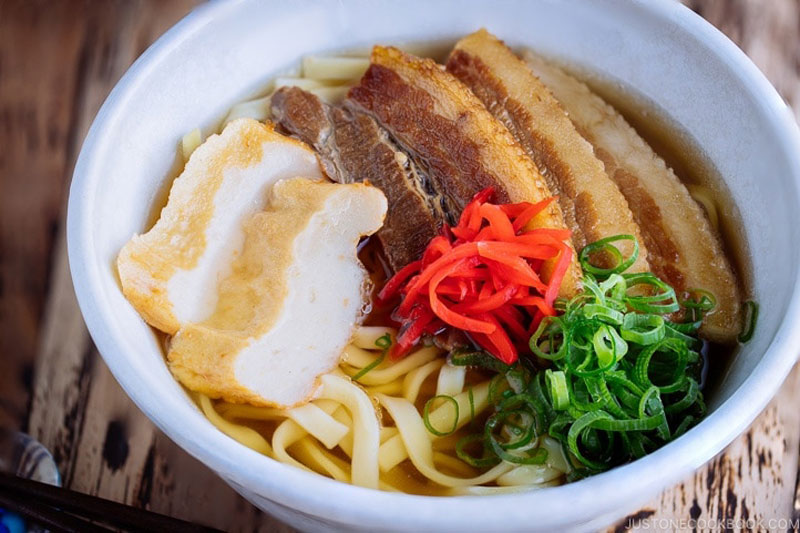
Not surprisingly, this dish is a version of a Soba noodle dish hailing from Okinawa. One of the most unique parts of Japan (and that’s saying something!) Okinawan cuisine is known for its meat, in particular pork.
Okinawa Soba is a noodle dish containing pork belly cooked in soy sauce and topped with fish cakes, fish paste, sliced scallions, and pickled ginger. The broth consists of dashi and pork; kind of a halfway meeting point between Ramen and your stock standard dashi noodle broth.
Tsukemen

Tsukemen, a modern twist on traditional Japanese cuisine, offers a refreshing take on Ramen. This dish features chilled noodles served alongside a separate bowl of steaming broth, inviting diners to dip and savour each bite. Invented in 1961, Tsukemen stands out for its robust dipping sauce, which packs a more intense flavour than typical Ramen broth. Accompaniments like Tamago omelettes, crisp nori, and succulent chashu enhance the experience, making Tsukemen a beloved addition to the food in Japan. It’s a culinary innovation that continues to captivate food lovers and adds depth to the rich tapestry of Japanese food.
Hiyashi Chuka
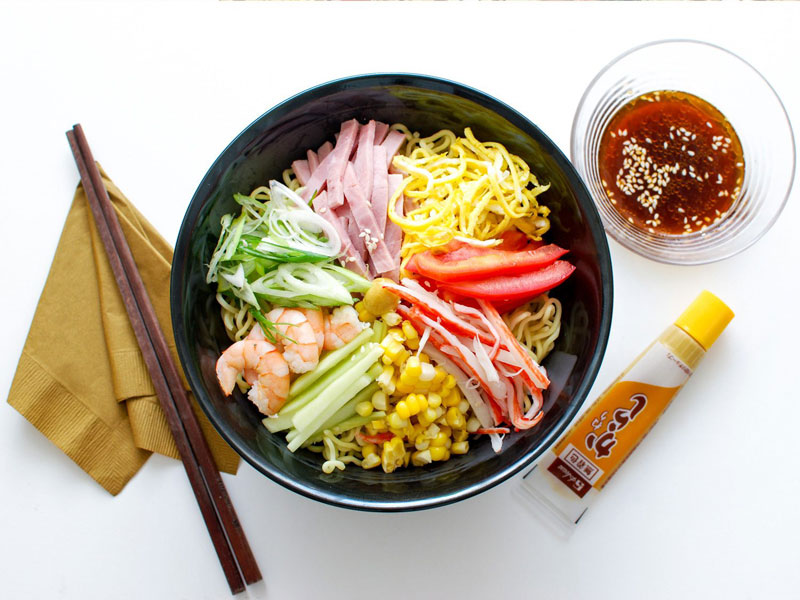
A popular summer dish in Japan when the average daytime temperature is 38c +. It’s a chilled Ramen dish which has all the similar toppings you would expect with standard Ramen, but just cold. Cold Ramen might seem strange initially, but once you experience a typical Japanese summer, you’ll be craving a Hiyashi Chuka. Inspired from Chinese cuisine which you can find in the name of the dish “chuka”.
The base of the soup is not as heavy as ramen and consists of rice vinegar, soy sauce, sugar, sesame oil, and a few other light ingredients. In the Kansai region of Japan, the dish is called Hiyashi Ramen, which translates to Chilled Ramen.
Soups & Stews

Soups and stews play an essential role in Japanese food culture and cooking. Hot pots, soups, and stews, whatever you want to call them, they’re all delicious! Warming and communal, Japanese stews and soup-based dishes are sure to pack a lot of flavour. From enjoying home-cooked meals to featuring in teishoku set meals at restaurants, a dash of dashi broths or hearty hot pots makes everything better.
Shabu-Shabu
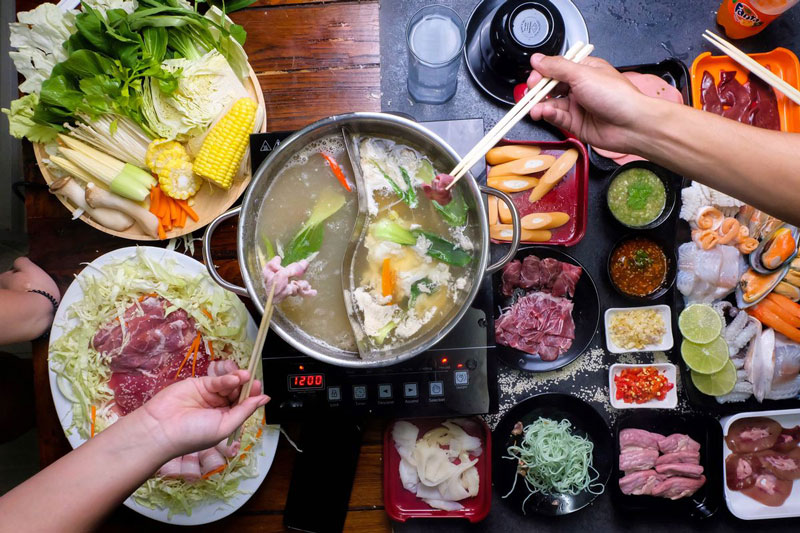
A Japanese nabemono hot pot dish, Shabu-Shabu is a communal dish that involves diners boiling thin slices of meat and vegetables in a broth and then dipping in sauces before being eaten. Some ingredients cooked in Shabu-Shabu include beef, cabbage, shungiku green onion (negi), carrots, and broccoli… hot pot heaven! Serve the shabu-shabu ingredients raw, and cook them tableside during the meal, unlike other types of hot pot. Scarlett Johansson and Bill Murray share this meal in Lost in Translation. This meal is shared by Scarlett Johanssen & Bill Murray in Lost in Translation.
Miso Soup
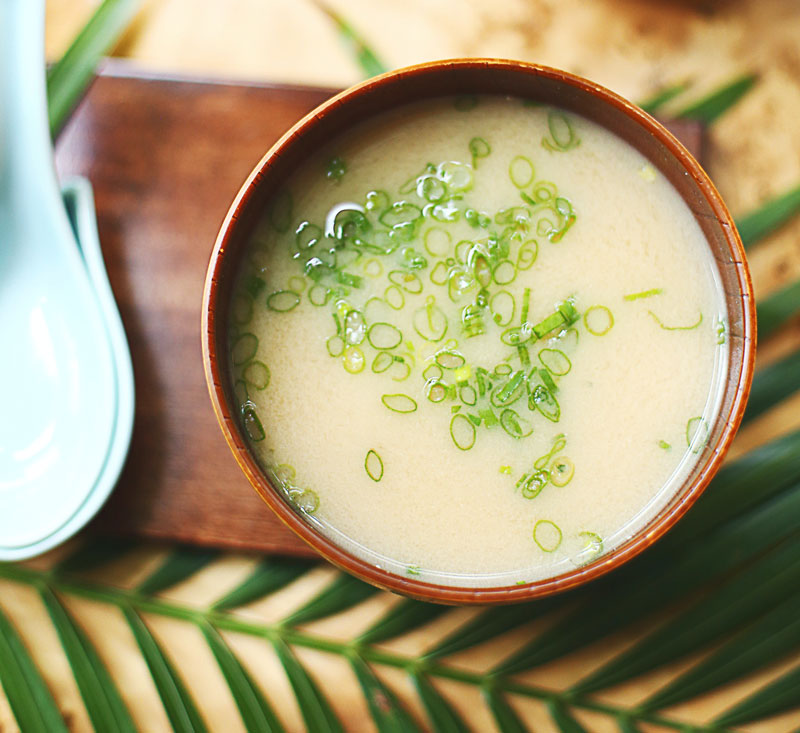
Almost 75% of people in Japan drink miso soup at least once a day. Make the miso soup broth from water, dashi stock, and miso paste, and add seaweed and tofu. Use fermented soya beans, barley, or rice malt to make the paste that flavours the soup. Miso is such an essential part of traditional Japanese cooking and originated in ancient times. Miso soup was a popular dish of the Samurai during the Kamakura and civil war periods.
Sukiyaki
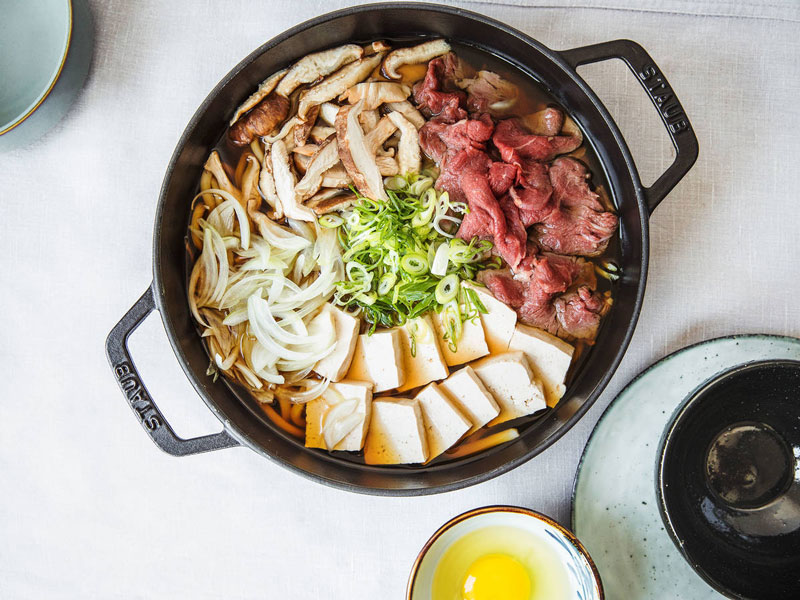
A cooked skillet communal dish. Add soy sauce, sugar, and mirin (Japanese wine) and cook them slowly. Friends and family enjoy sukiyaki together. Diners add meat or vegetable ingredients to the pot during the meal. When the ingredients are cooked, they take them out and dip them in a small bowl of raw beaten eggs. Best enjoyed in a restaurant and commonly eaten in Japan as a winter dish at new year parties.
Chankonabe
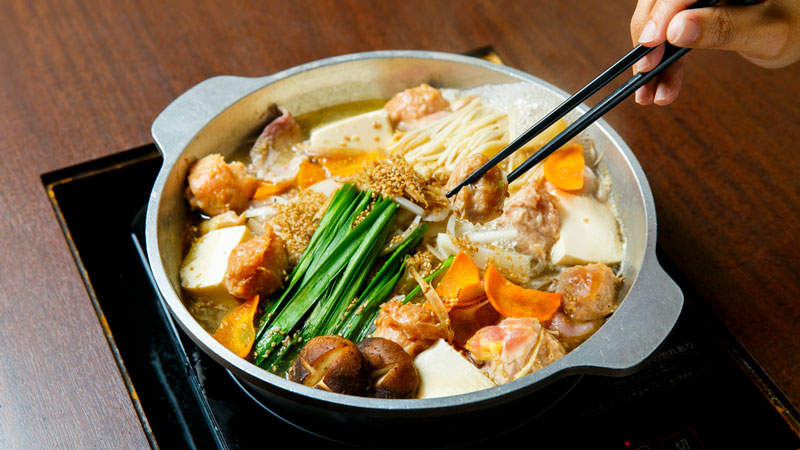
The main dish by Sumo wrestlers. There actually isn’t a defined recipe for Chankonabe beyond the stewing of the main ingredients in vast quantities; proteins (chicken, beef, fish, or tofu), vegetables (cabbage, potatoes, mushrooms, bok choy, and radishes), and broth. Considering the need to bulk up, Sumo wrestlers aim for substantial portions, consuming an average of 5,500 calories per day.











































